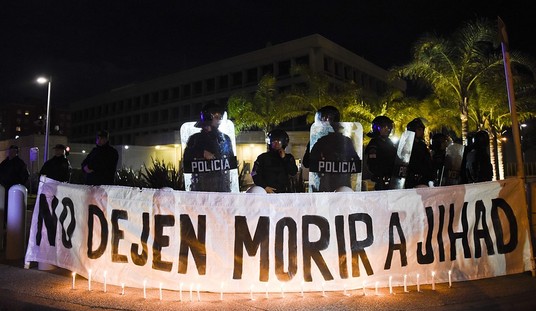The papacy may or may not have tried to ban the crossbow. But the Second Lateran Council (1139) certainly disparaged the “murderous art of crossbowmen and archers” when their weapons were directed against Christians. The dismayed council decided to prohibit their use on Christians “from now on.”
Alas, perpetuity proved to be short-lived.
Likewise, naval arms limitations treaties after World War One failed to stop naval warfare in World War Two.
As naval-history.net notes, in 1936 Hitler’s Germany “agreed to prohibit unrestricted submarine warfare against unarmed ships.” Yes, in 1936 Hitler claimed -disarmingly-that he wanted peace, and legions of appeasers believed him. Within three years Hitler invaded Poland, and the U-boats began their savage sea campaign.
Arms control treaties have a uninspiring history of trust, hope, and, occasionally, technological vision, entwined with delusions, calculated lies, rhetorical posturing, and outright political fraud. They have a sad legacy of providing diplomatic cover for vicious dictatorships. Iran signed the Nuclear Non-Proliferation Treaty (NPT) and —as it plays thermonuclear hide and seek with the UN, EU, US, Israel, and Iraq– remains superficially committed to the agreement. North Korea signed it and cheated, then withdrew. (Further reading here.)
Which brings us to the cluster munitions convention negotiations held in Ireland in late May, and the conference’ treaty banning cluster munitions adopted on May 30.
Hosannaed by arms controllers, hoorahed by “the international community,” hailed by anti-Americans everywhere, the treaty is another attempt to politically cleanse warfare. Over 100 nations are scheduled to sign the treaty at ceremonies this coming December.
Cluster weapons are hideous weapons -but show me a weapon that isn’t. “Area weapons” like the first-generation of cluster munitions are not a new idea. The canister round discharged by Napoleon’s smooth-bore cannons wreaked hell on opposing cavalry formations and massed infantry assaults. Canister and its cousin “grapeshot” were the machinegun rounds and after a fashion, the cluster munitions of their era.
Modern cluster munitions are small bomblets released from artillery shells or larger bombs. “Grenade-like” is a common description for at least one type of cluster munition.
The United States pushed development of cluster munitions to serve as a “super canister round from above” fired at or dropped on massed Russian tanks, armored personnel carriers, and (the best target) the “thin-skinned” trucks supporting the armor. The “sub-munitions” (bomblets) would scatter from the larger “delivery-dispersal munition” and strike the vehicles or serve as “instant minefields” that would damage tracks or tires and immobilize the vehicles.
“No nukes!” That is an old cry, and fewer nukes remains a good idea. The Cold War-era cluster munitions were regarded as conventional alternatives to tactical nuclear weapons – in theory cluster munitions could at least delay if not severely damage an entire Soviet tank division attempting to break through NATO lines and drive to the Rhine. In other words, the weapons reduced the possibility of nuclear warfare in Europe.
Cluster-type munitions could also be used against infantry (anti-personnel role) or used to suppress anti-aircraft weapons (guns, radars, missiles, etc). A “cluster strike” against a Saddam-era anti-aircraft position could save the life of US or British pilots flying UN-sanctioned “no fly zone” missions over northern Iraq — missions designed to save the lives of innocent Kurds exposed to Saddam’s depredations.
Like every explosive bomb or round a certain number of cluster munitions fail to explode. Cluster munitions litter many battlefields and continue to kill after the war ends. This is the legitimate moral spine of the argument to ban the weapons — like land mines and other unexploded ordnance, innocent lives are taken long after the military forces have left. The moral spine of the argument to keep them is made by the US Department of Defense which says the weapons protect the lives of American soldiers. Many pro-ban supporters don’t have cluster munitions. Many pro-ban supporters don’t like American soldiers, either. Saddam would have preferred the US and British pilots leave his airspace, so he could have his way with the Kurds.
Which is another reason the anti-American angle which is part and parcel of the treaty’s theater is particularly disgusting. On May 23rd treaty “activists” accused the US of “bullying” behavior:”
“The United States is trying to bully its allies into weakening a treaty banning cluster bombs, Jody Williams, who won the Nobel Peace Prize for leading a campaign against landmines, said on Friday (May 23).”
Yeah, great populist poke there, Jody of The Nobel Prize. Such a hard blow at the big, bad Yankee bully. Wow. How gutty.
The Atlanta Journal-Constitution’s brief May 31 story on the treaty opens with “Negotiators of a landmark treaty banning cluster bombs predicted the pact will make it too politically painful for the United States ever to use the weapons again.” China, Russia, India, Pakistan, and Israel have also refused to agree to the treaty, but the US is, as usual, the main rhetorical target.
In part this is a legacy of the Cold War where the unilateral disarmers largely focused on the US; kicking the US cost them zip politically and they had no influence at all over the Communist totalitarians. The US, its critics to the contrary, remains the most benign global power that has ever existed, so piquant displays of self-righteousness by activists and hypocrites still have no downside. In fact, the posture guarantees headlines and headlines attract donors. “Say it ain’t so, Joe,” the kid said to his hero, Shoeless Joe Jackson — but aye, kid; headlines attract donors, and build egos, too.
A cheap shot? The “international community” has pulled this trick for decades, and a lot of Americans are sick and tired of it. (In fact, Rudy Guiliani made a point of mentioning the end of “cost free” anti-Americanism in a September 2007 article in Foreign Affairs:
“Too many people denounce our country or our policies simply because they are confident that they will not hear any serious refutation from our representatives. The American ideals of freedom and democracy deserve stronger advocacy. And the era of cost-free anti-Americanism must end.”
Consider China, which did not sign the land mine treaty or the cluster munitions convention. The China of today is not Mao’s China; in fact, the Sichuan earthquake disaster is proving to be another measure of China’s increasing openness. Chinese openness bodes well for peace, but as StrategyPage noted in March 2007 regarding the landmine treaty see here), Chinese cynicism over arms control continues, this time with a capitalist twist.
“Renewed international efforts to ban cluster bombs was welcomed by Chinese arms manufacturers. When landmines were banned by international treaty, a document China did not sign , China instantly got a much larger share of the landmine market. They expect the same thing to happen if the cluster bomb treaty is signed.”
Too harsh? Perhaps– but it serves as another warning that “feel good” diplomatic display often does little good in the killing fields. (Hey, Sudan signed the land mine treaty.) As for the argument that “the harder the war the harder the peace,” it holds when democracies win, and continued suffering caused by unexploded ordnance isn’t merely a continuing political problem but a lingering evil. This is why use of any explosive weapon ought to be judicious and rare.
As it is, a new generation of cluster munitions is already appearing, “smart” and “smarter” clusters that can strike more precisely (which means ostensibly it takes fewer sub-munitions to be effective). The “smarter” bomblets can “self-deactivate.” But self-deactivation alone doesn’t exempt a cluster munition under treaty guidelines. Besides, some frustrating percentage of the smartest widgits always fail. Even a cluster munition which meets all of the exemption characteristics described in treaty Article 2-2 will blow up and take an innocent life, the same way unexploded ordnance from World War One occasionally kills a French farmer.
As it is, the treaty appears to have some loopholes that disturb its more fervent advocates. But the biggest loophole is unspoken, so I’ll speak it: what stops Eritrea from immediately using cluster munitions if Ethiopia threatens to breakthrough at Badme (or vice versa) and what mechanism prevents Sudan’s noxious government from using them against its numerous tribal and political enemies in southern and western Sudan.
The answer? Why, the outrage of “the international community” of course. The same one that has been so damn effective in stopping genocide in Darfur.
Ultimately, the cluster munitions treaty is political drama –with a degree of moral weight — involving well-intentioned idealists, some decent-sort diplomats, scores of cynics, and scads of liars. UN Security Council Resolutions 686 and 687, which suspended Desert Storm, also had moral weight, but they didn’t prevent Saddam from killing at least 50,000 Shia Arabs in March and April 1991.
I sincerely wish the idealists and the decent-sorts the best, and I support their efforts to remove unexploded munitions and compensate victims of cluster munitions, though when we discover an Al Qaeda terrorist has been recompensed I expect the idealists and decent-sorts to make certain the abusive bastard returns his payout.
Yet along with sincere wishes I also think of William Tecumseh Sherman, the tough general who fought a truly destructive war of liberation and the reflective man who told a gathering of cadets in 1879 “There is many a boy here today who looks on war as all glory, but, boys, it is all hell.”









Join the conversation as a VIP Member